Graf Zeppelin
The history of "Graf Zeppelin" LZ 127 (it. Graf Zeppelin), one of the largest and most advanced airship in the world, began in 1928.
The airship was named after the German pioneer of airships Zeppelin rigid system. His fate befell the happiest of all the existing rigid airships.
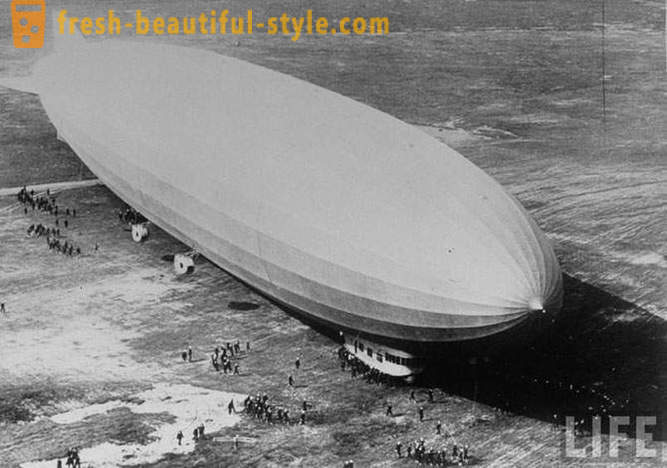
Nine years this ship was used for other purposes, held in the air for about 17,200 hours, made 590 flights around the world, overcame almost 1, 7 million km and transported 13 110 passengers and 70 tons of cargo and mail.; while it 143 times crossed the Atlantic Ocean and 1 times - Pacific.
"Graf Zeppelin" 1927: Working on scaffolding working on a huge steel structure.
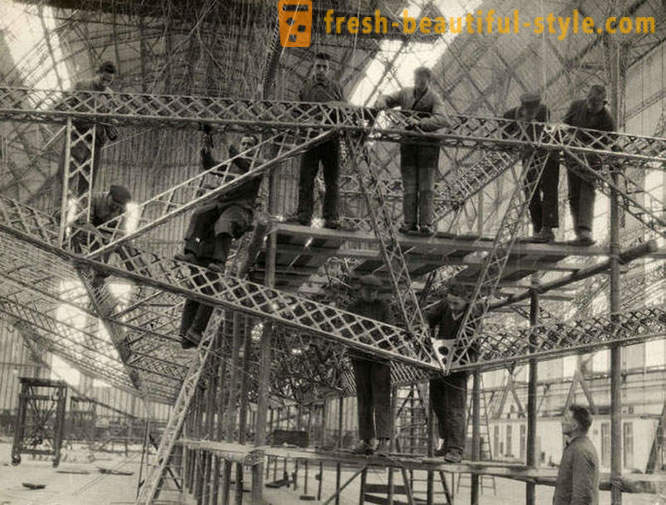
airship length was 236, 6 m, the maximum diameter - 30, 5 m, volume - 105,000 m³, a carrier gas (hydrogen) is housed in compartments 17. The propulsion system consisted of 5 engines "Maibach" VL II capacity 530 liters. from. everyone.
"Graf Zeppelin" 1927 Front Zeppelin gondola.

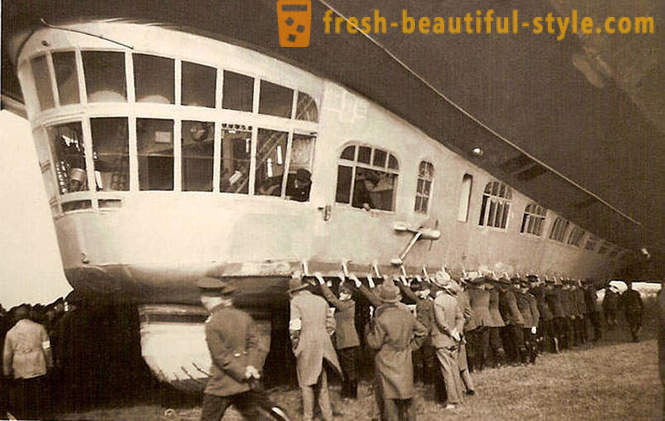
From other airships it differed in that for engines used together with liquid and gaseous fuel (Blau-gas) that has a density close to that of air, and the calorific value of the function was significantly higher than that of gasoline. This is an advantageous solution contributed to an increase flight range and eliminates the need zatyazhelyat airship as generation fuel (heaviness airships carried out by discharging part of the carrier gas, creating a number of economic and aerobatic inconveniences). In addition, naturally, that the use of gas leading to a lower load on the frame, in contrast to that which took place when installing multiple tanks with gasoline. 1928: Construction of the airship.
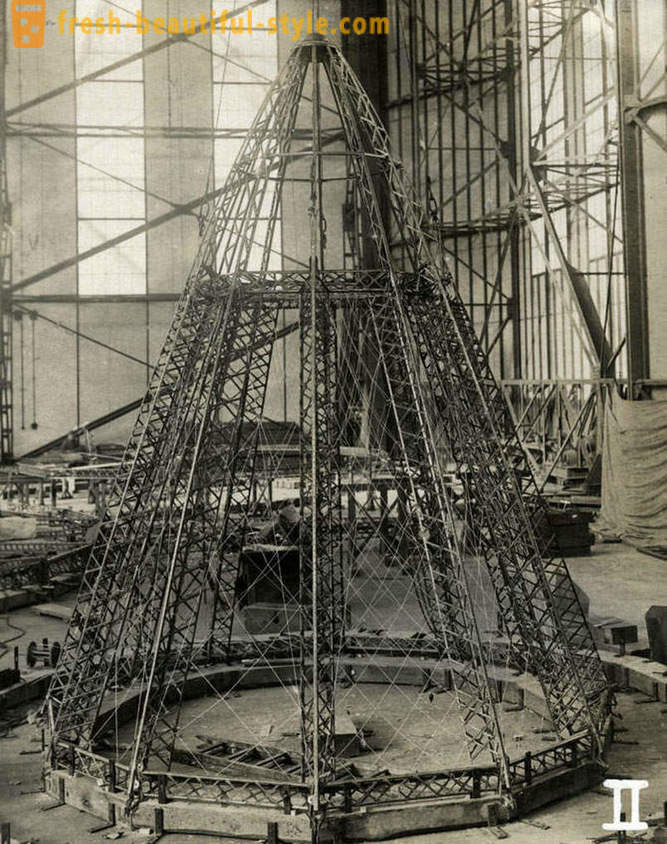
"Graf Zeppelin" 1930: the main gondola.
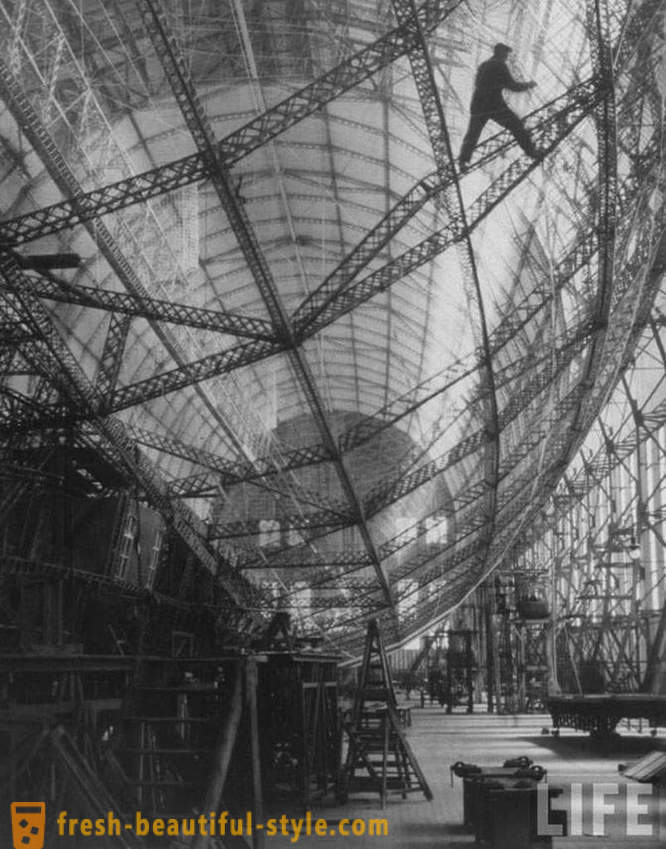
Blau gas was in the compartments 12 in the lower third airship carcass, the volume of which can be brought up to 30,000 m³ (hydrogen in this case was 105,000 m³-30,000 m³ = 75,000 m³). Gasoline was taken on board as additional fuel.
Payload airship was about 25 m (when filling with hydrogen bags intended for Blau gas - about 55 m), the maximum speed - 128 km / h, cruising - about 115 km / h. Flight range - more than 10 000 km. The crew consisted of 40-45 people.
The steel frame of the airship.
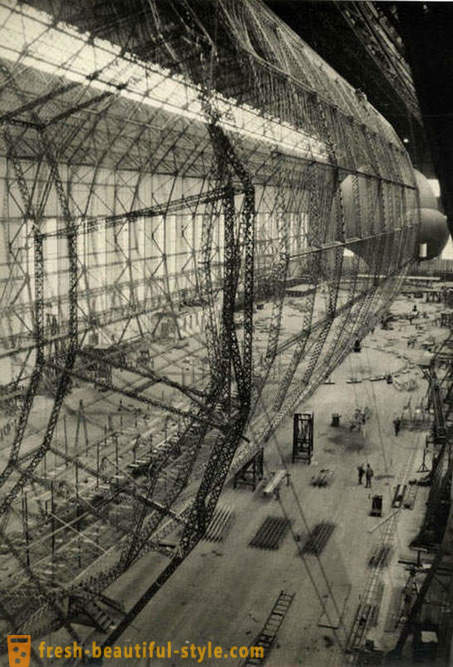

In front of the bottom fastened to the housing front dirigible gondola, whose length was 40 m, width - 6 m and a maximum height - 2, 25 m (the largest in the history airship nacelle).
Construction giant airship gondola.
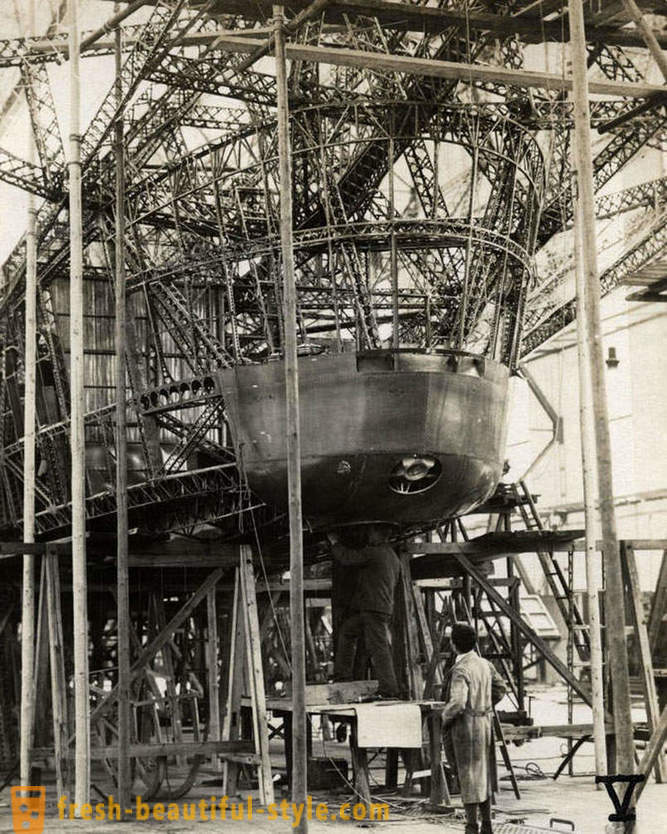
airships were controlled from the wheelhouse, which was in front of the nacelle, behind it - service and further - passenger spaces. According to comfort LZ 127 is significantly superior to the then (and in some respects and modern) planes.
Using an external coating airship.
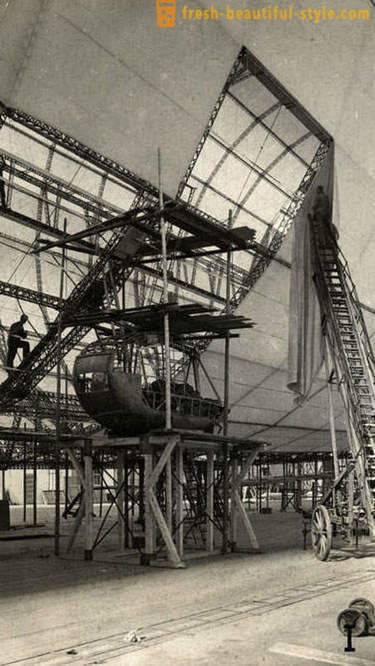
The passengers were placed in 10 double cabins equipped with beds.
cab interior.
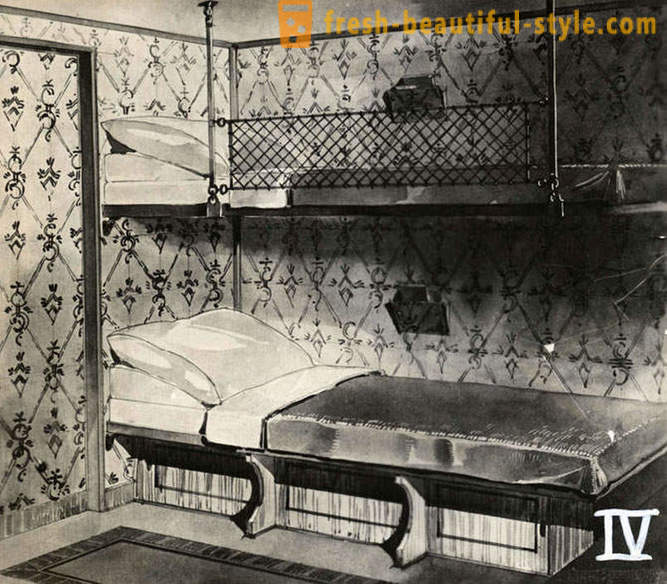
The spacious saloon area 25 m² placed in front of the passenger compartment, at the same time there can accommodate 28 people. Through the slanted windows of cabins and cabin provides good visibility and lighting. There was also a kitchen that can cater for 50 people for several days. In addition, there were a post office, washrooms and so on. Flight over Hamburg, 1928.
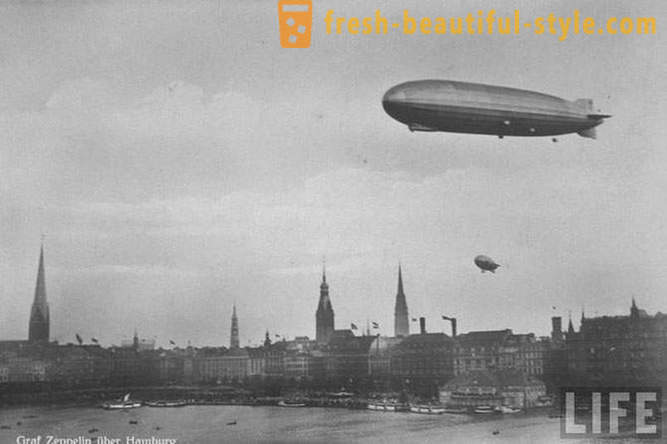
In the fall of 1925 at the initiative of Hugo Eckener - one of the pioneers of aeronautics and managed ally Count Zeppelin in Germany nationwide fundraising for the creation of a major new transport zeppelin pilot was organized. It managed to collect 2, 3 million. Marks, as a basis for the construction of the airship LZ 127.
A massive body Zeppelin stretched canvas, 1928.
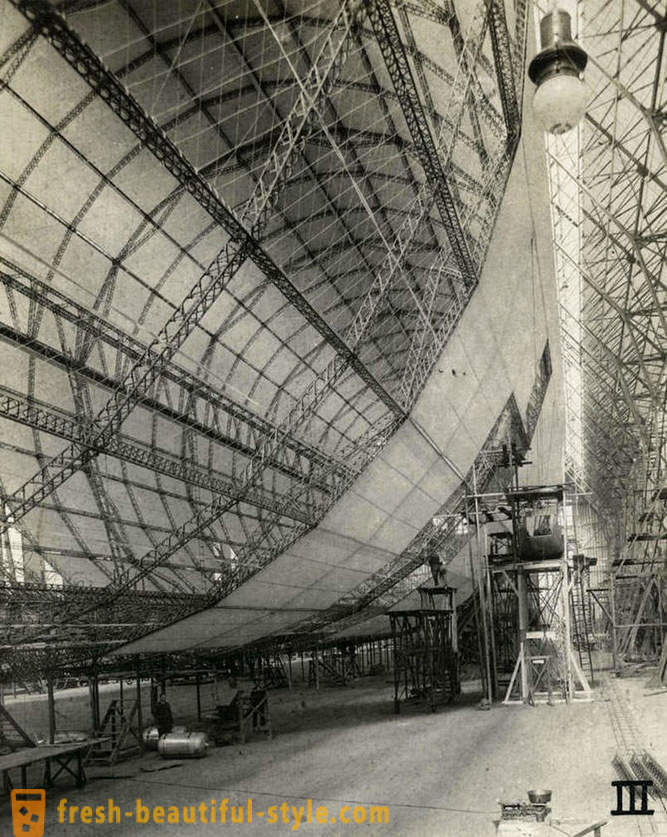
July 8, 1928, the day of the 90th anniversary of Count Zeppelin, LZ 127 was solemnly baptized in his name the only daughter of the Earl and his first flight of the airship LZ 127 "Graf Zeppelin" made September 18, 1928.
The return of the airship after the first flight over Germany, in September 1928.
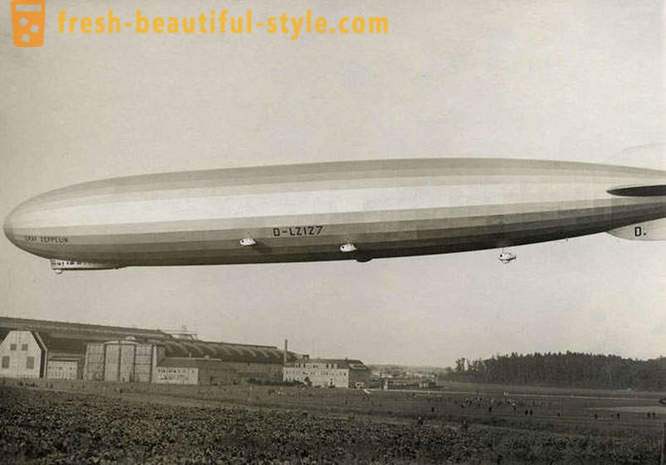
is returned to his home in Friedrichshafen After a successful trip LZ 127 "Graf Zeppelin".
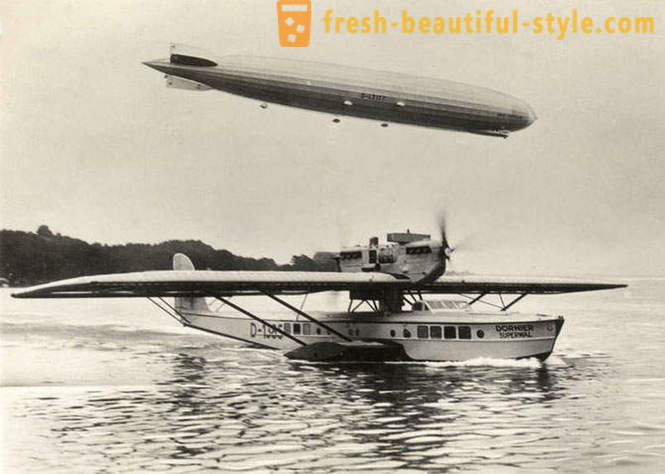
In August and September 1929 under the command of an airship Hugo Eckener made the first in the history of aeronautics circumnavigation flight.
The commander of the "Graf Zeppelin" Dr. Dr. Hugo Eckener.

started in Lakehurst, "Graf Zeppelin" at least 20 days has overcome more than 34 thousand kilometers with an average flight speed of about 115 km / h, while committing only three stopovers -. In Friedrichshafen, Tokyo and Los Angeles.
Participants "Hollandfahrt" October 13, 1929 near the German airship LZ 127 "Graf Zeppelin" in the hangar in Friedrichshafen.
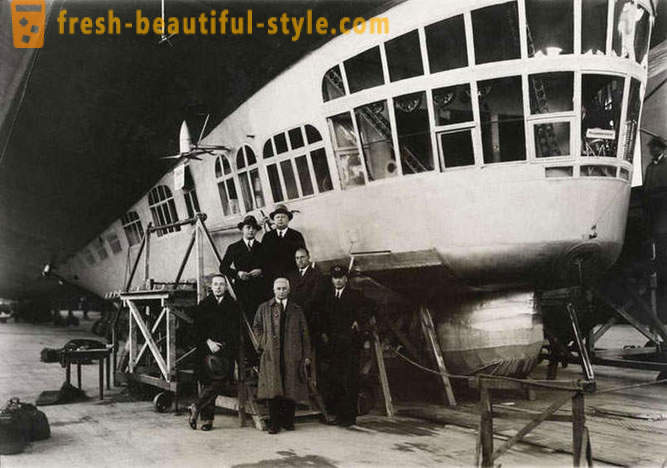
The purpose of this flight was to demonstrate the capabilities of rigid airships. Parallel conducted meteorological observations.
A letter sent from the board of "Graf Zeppelin". The letter is addressed to Ms. Goldshalk, Amsteldidzhik 112, Amsterdam, The Netherlands. Sent from LZ127 "Graf Zeppelin", flying from Los Angeles - Friedrichshafen ", 1929.
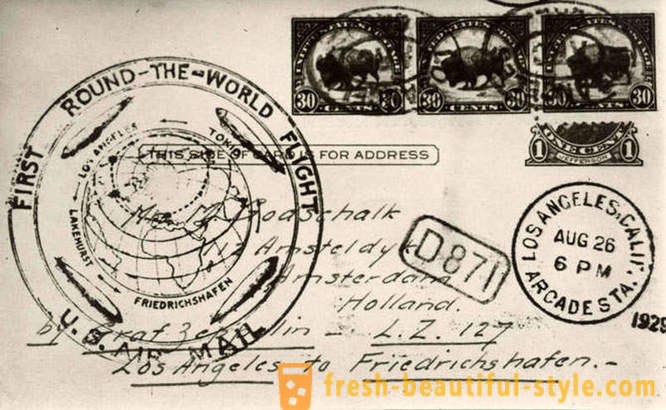
The lady in his little bathroom on board the airship.
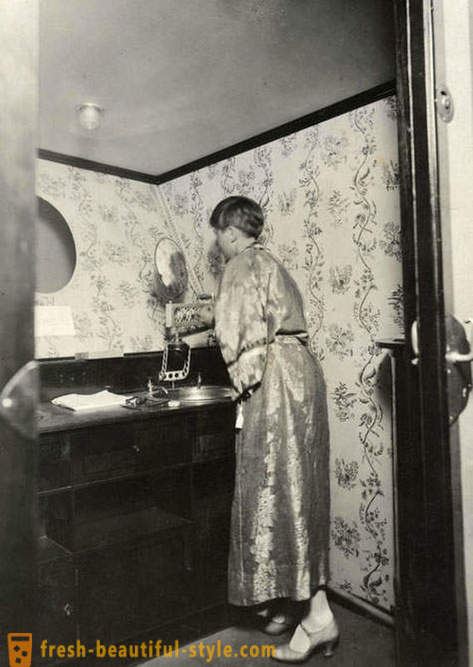
"Graf Zeppelin" flies over the Presidential Palace von Hindenburg, 1929.
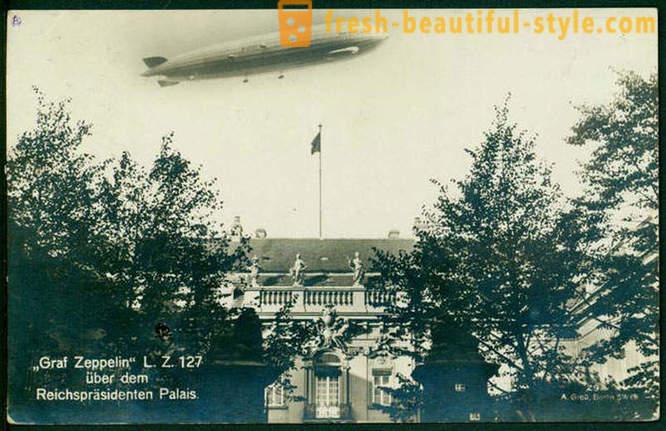
From May 18 to June 6, 1930 "Graf Zeppelin" made a circular flight in South and North America.
Airship over New York.
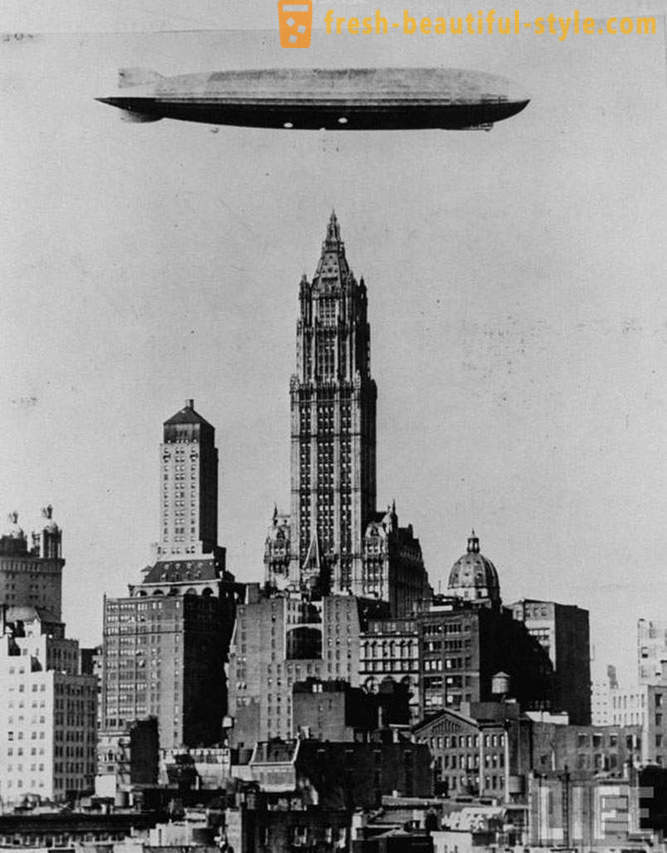
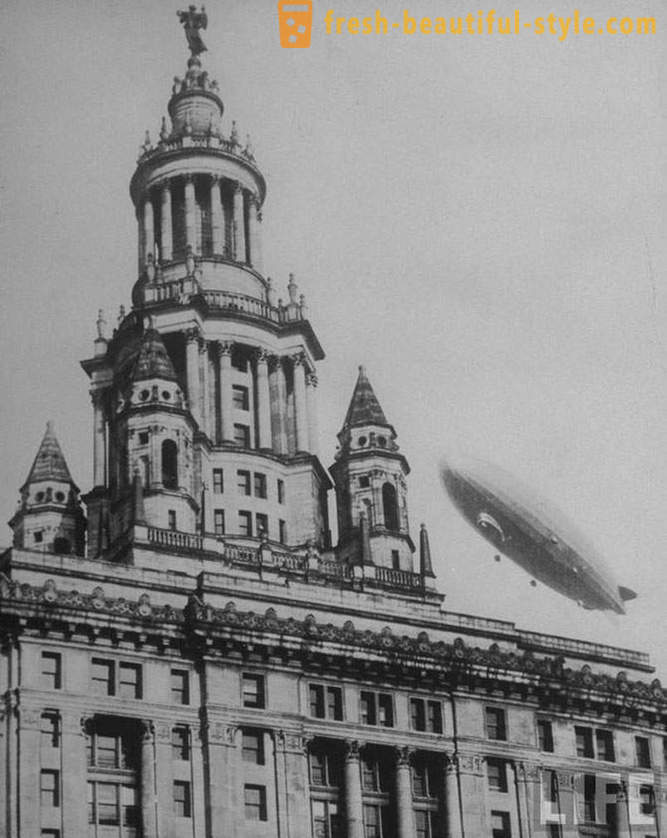
Lakehurst, New Jersey, USA, 1930.

In 1931, the airship began regular flights to Brazil. And in 1936 "Graf Zeppelin" opened air links Friedrichshafen, Germany - Brazil / Argentina. The trip takes 300 flight hours. The airship sailed to Brazil over France, the Canary Islands and Cape Verde. Flying "Graf Zeppelin" was held at a low altitude and therefore allowed to take photos from the board.
Brazilian palm produces long shadows at sunset.

One Flew on the palm grove.
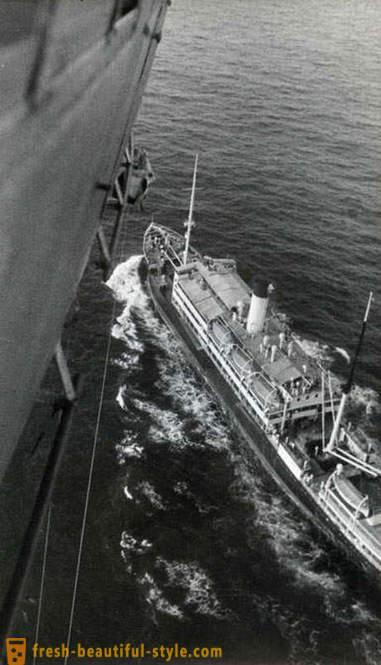
Meeting of the airship with the Brazilian passenger ship.
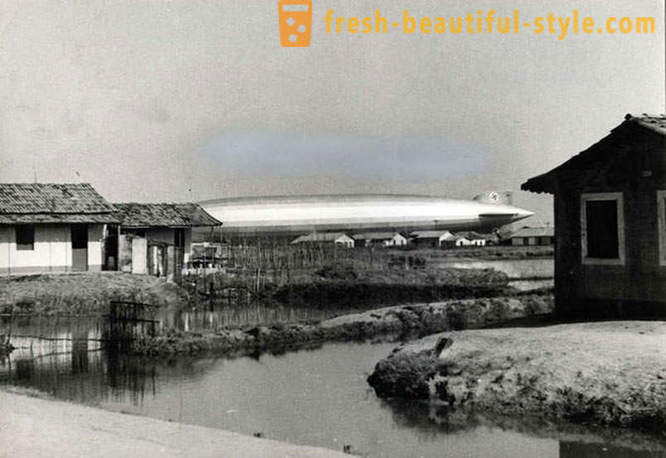
After the successful flight of "Graf Zeppelin" landed safely at the airport of Pernambuco.
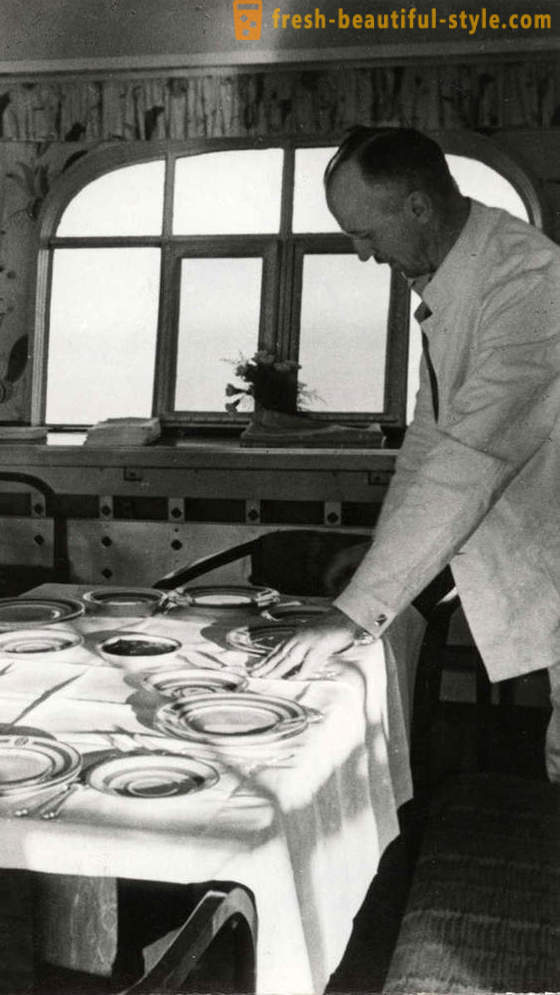
Table layout in a spacious restaurant airship.
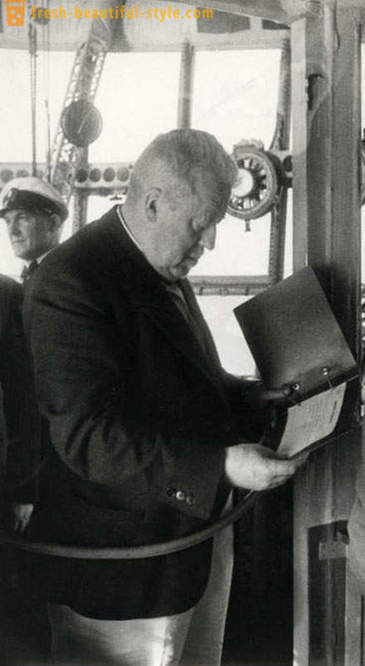
The famous commander of the "Graf Zeppelin" Dr. Hugo Eckener (1868-1954) in the control room.
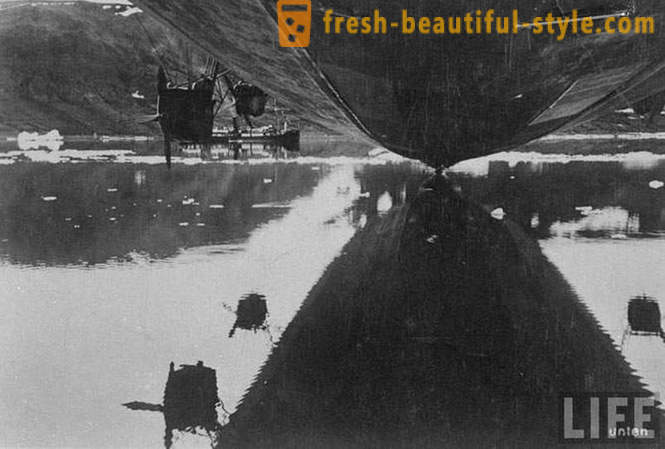
Since 1936, some flights to South America has been assigned to a new zeppelin LZ 129 "Hindenburg", which opened the air line and in North America (the technical capabilities "Graf Zeppelin" was insufficient to regular flights across the North Atlantic).
September 10, 1930 "Graf Zeppelin" flew to Moscow on July 26-30 in 1931 he was for scientific purposes, but unofficially and intelligence, flying over part of the Soviet Arctic. During the flight was carried out detailed aerial photography. On board were the Soviet specialists. Also during the flight the airship in the bay Silent Hooker Island (Franz Josef Land) exchanged mail with the Soviet icebreaker "Malygin". "Graf Zeppelin" approaching the Russian icebreaker "Malygin" in the Arctic Ocean off the coast of Franz Josef Land to the ceremonial exchange of 50,000 mailings, 1931.
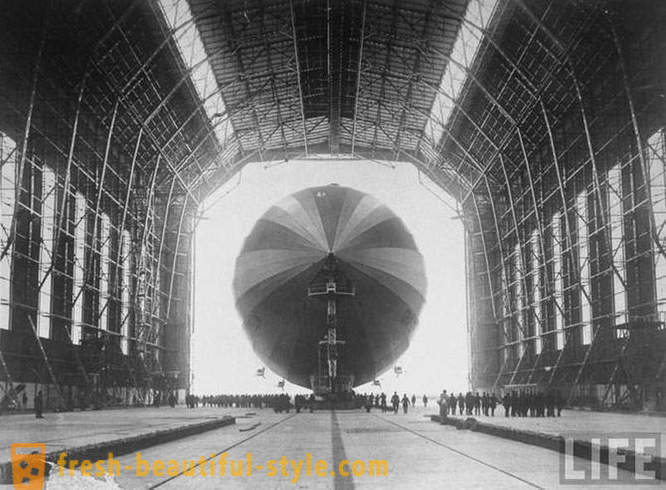
After the disaster struck the airship "Hindenburg", regular flights LZ 127 were terminated. Soon the "Graf Zeppelin" was turned into a museum. Airship in Germany stopped with the beginning of World War II, when the spring of 1940 on the orders of the German command LZ 127 "Graf Zeppelin", as well as the self-titled LZ 130 "Graf Zeppelin", built in 1938 on the basis of the LZ 129 and is often called the name "Graf Zeppelin II ", were dismantled and their parts used in the military industry.
"Graf Zeppelin" in the new giant hangar, 1936.
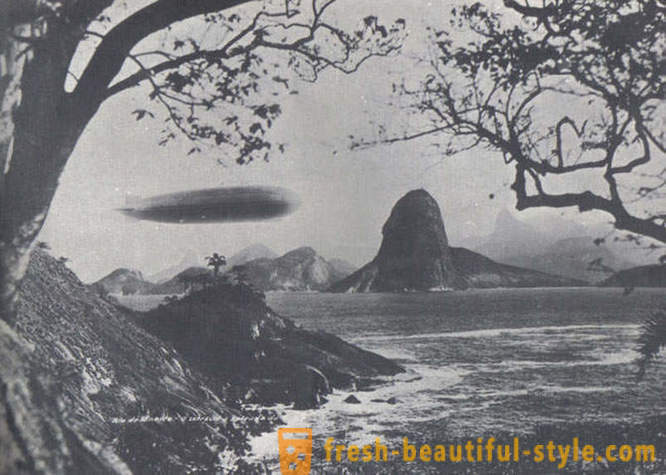
The airship flies over the Guanabara Bay, Brazil, May 25, 1930.
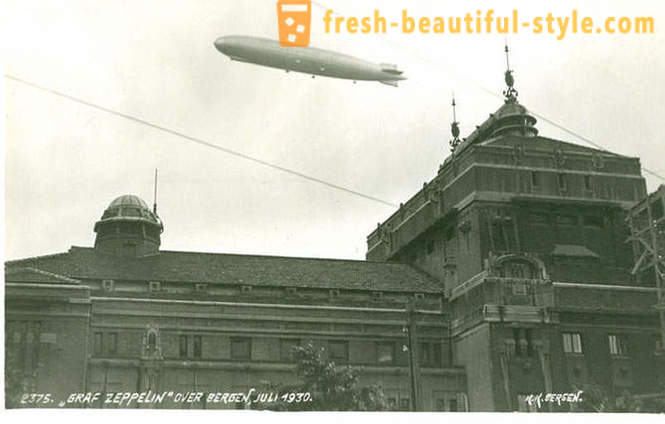
The airship of Bergen, Norway, 1930.

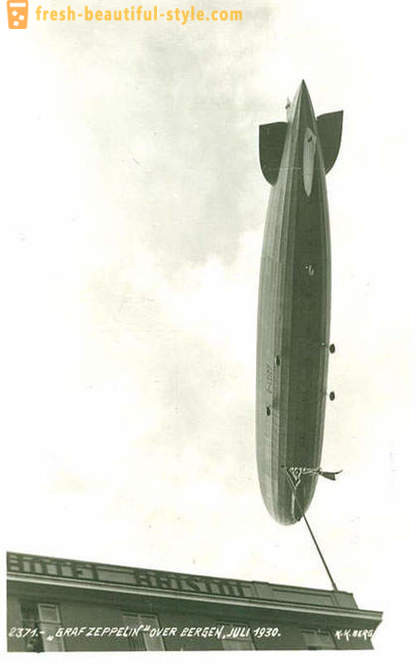
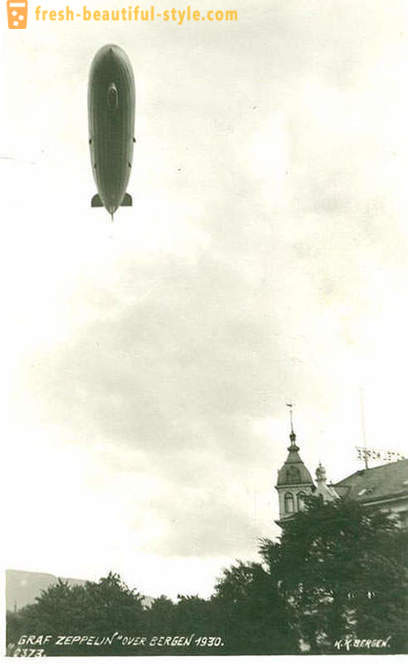
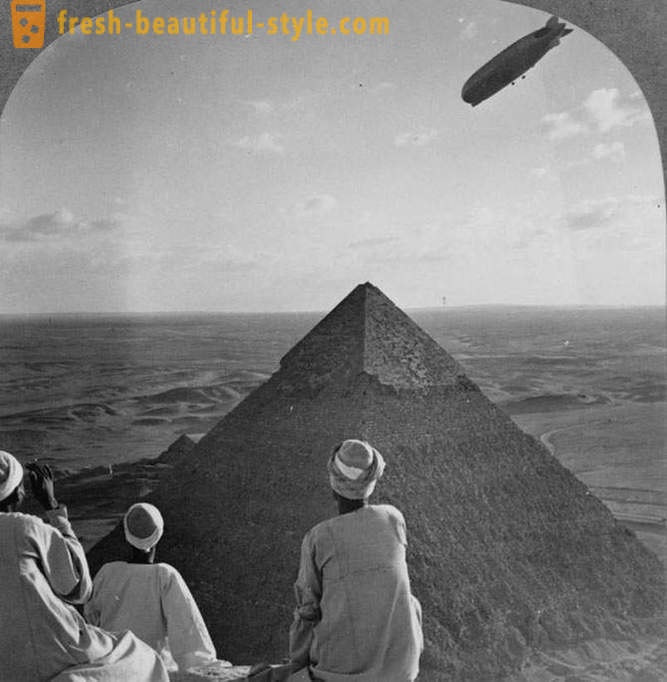
Airship over Giza, 1931.
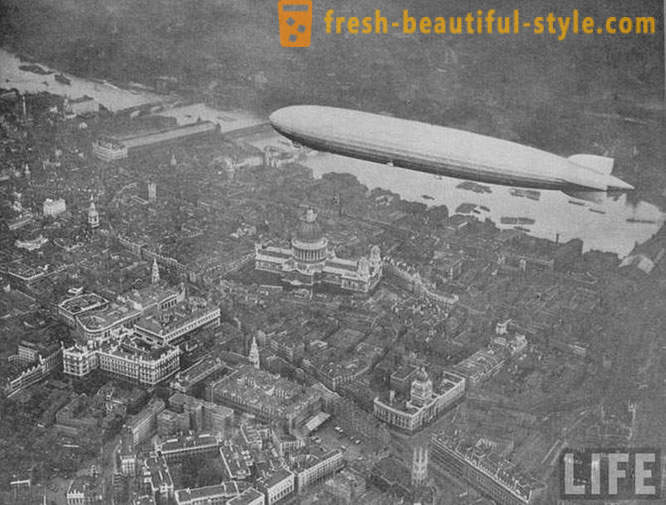
The airship over the British capital, 1931.













































